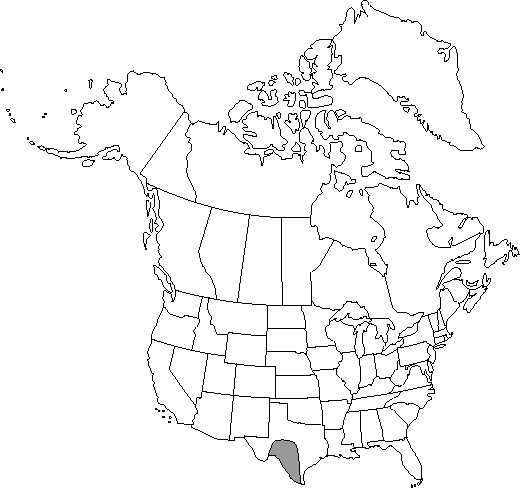Difference between revisions of "Ephedra pedunculata"
Proc. Amer. Acad. Arts 18: 157. 1883.
FNA>Volume Importer |
imported>Volume Importer |
||
| (3 intermediate revisions by 2 users not shown) | |||
| Line 8: | Line 8: | ||
}} | }} | ||
|common_names=Clap-weed | |common_names=Clap-weed | ||
| + | |special_status={{Treatment/ID/Special_status | ||
| + | |code=C | ||
| + | |label=Conservation concern | ||
| + | }} | ||
|basionyms= | |basionyms= | ||
|synonyms= | |synonyms= | ||
| Line 33: | Line 37: | ||
-->{{#Taxon: | -->{{#Taxon: | ||
name=Ephedra pedunculata | name=Ephedra pedunculata | ||
| − | |||
|authority=Engelmann ex S. Watson | |authority=Engelmann ex S. Watson | ||
|rank=species | |rank=species | ||
| Line 47: | Line 50: | ||
|publication title=Proc. Amer. Acad. Arts | |publication title=Proc. Amer. Acad. Arts | ||
|publication year=1883 | |publication year=1883 | ||
| − | |special status= | + | |special status=Conservation concern |
| − | |source xml=https:// | + | |source xml=https://bitbucket.org/aafc-mbb/fna-data-curation/src/2e0870ddd59836b60bcf96646a41e87ea5a5943a/coarse_grained_fna_xml/V2/V2_543.xml |
|genus=Ephedra | |genus=Ephedra | ||
|species=Ephedra pedunculata | |species=Ephedra pedunculata | ||
Latest revision as of 21:24, 5 November 2020
Shrubs vinelike, trailing or clambering, 6–7 m. Bark gray, slightly cracked and fissured. Branches alternate (rarely whorled), lax, angle of divergence about 55°. Twigs gray-green, becoming green, then yellow-green with age, glaucous, with several moderately deep longitudinal grooves; internodes 1–8 cm. Terminal buds attenuate, 1–3 mm. Leaves opposite, 1–3 mm, connate to 2/3–7/8 their length; bases splitting at margins, persistent; apex obtuse. Pollen cones 1–2 at node, lanceoloid, 4–8 mm, sessile or on short to long, smooth peduncles; bracts opposite, 6–12 pairs, light yellow to reddish, obovate, 2–4 × 2–3 mm, membranous, free or slightly connate at base; bracteoles barely exceeding bracts; sporangiophores 3–5 mm, exserted to 1/2 their length, with 4–6 long-stalked (1–2 mm) microsporangia. Seed cones 1–2 at node, ovoid, 6–10 mm, on short to long, smooth peduncles; bracts opposite, 3–6 pairs, 3–4 × 2–3 mm, ovate, connate to 1/8–7/8 their length, inner pairs becoming succulent and red when ripe. Seeds 2, ellipsoid, 4–10 × 2–4 mm, brown, smooth.
Phenology: Coning midwinter–early spring.
Habitat: Dry, sandy to rocky areas and slopes
Elevation: 100–1000 m
Distribution

Tex., n Mexico.
Discussion
Of conservation concern.
Selected References
None.